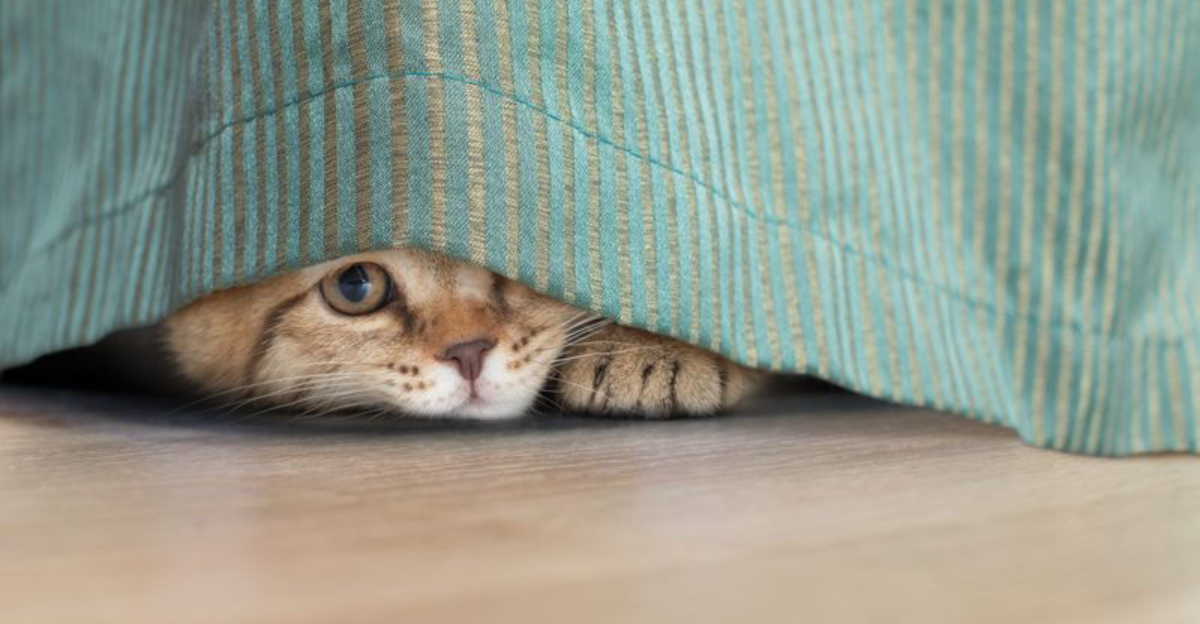Cats are known for their mysterious and independent nature, making it challenging at times to understand their moods.
However, like humans, cats can experience unhappiness and stress. Recognizing the signs of an unhappy cat is crucial for their well-being. This guide explores distinct signals that your feline friend might be feeling unhappy, helping you ensure they are content and healthy.
1. Excessive Meowing
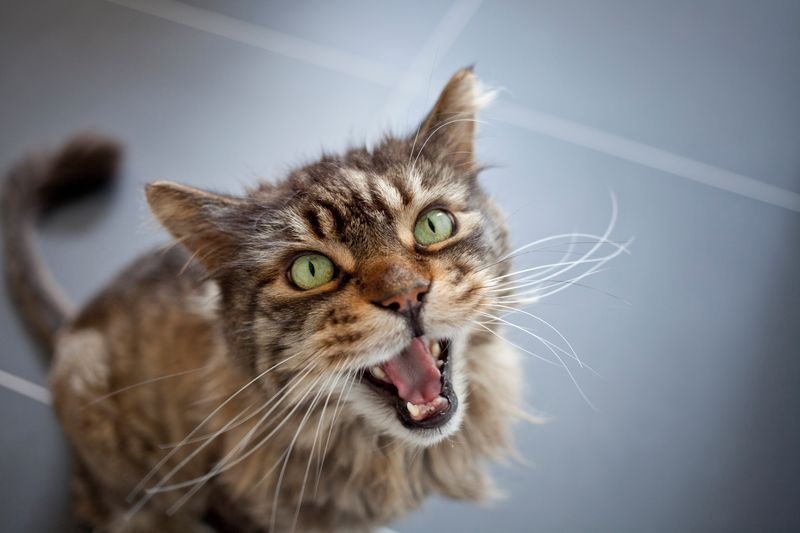
Excessive meowing can be more than just a quirk of your cat’s personality. If your feline is relentlessly vocalizing, it might be a cry for help.
Cats often meow to communicate discomfort or distress. This behavior can stem from various sources, including health issues, boredom, or a need for attention. If you notice your cat meowing excessively, consider checking for any physical changes or environmental stressors.
Perhaps your cat is hungry, thirsty, or feeling unwell. Sometimes, moving to a new home or introducing a new pet can trigger this behavior. While some meowing is normal, a sudden increase in vocalization warrants attention.
Consulting with a vet can help rule out any medical conditions. Additionally, spending quality time with your cat and providing enrichment can ease their need to meow for attention.
2. Lack Of Appetite
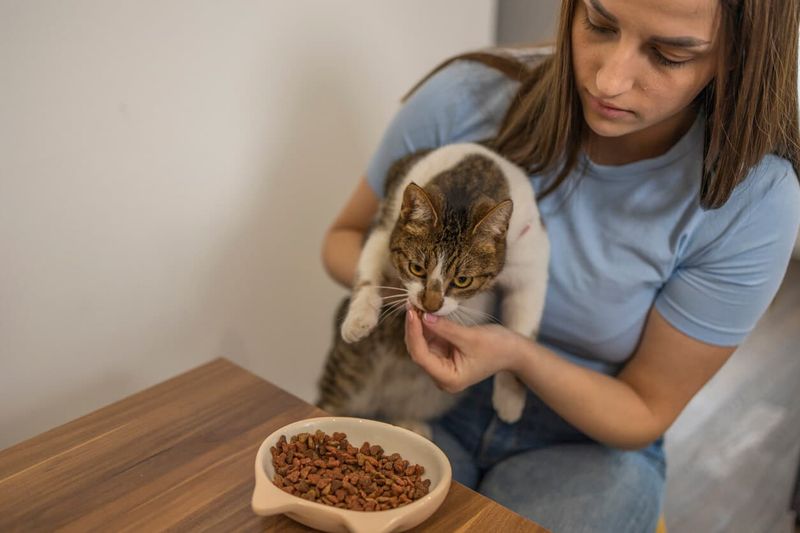
When a cat loses interest in food, it’s a significant red flag that something might be wrong. Cats are typically creatures of habit, and eating is one of their primary routines. A change in their eating pattern can indicate stress, illness, or even depression.
Observe if this behavior persists for more than a day or two. Temporary disinterest might be due to minor stress, like a change in brand of food or feeding time. However, prolonged lack of appetite, especially if paired with weight loss, should not be ignored.
Addressing this issue might involve a visit to the veterinarian to rule out any underlying medical conditions. Ensuring a calm and quiet feeding environment can also encourage your cat to eat. Providing a variety of foods might also rekindle their interest in meals.
3. Excessive Grooming
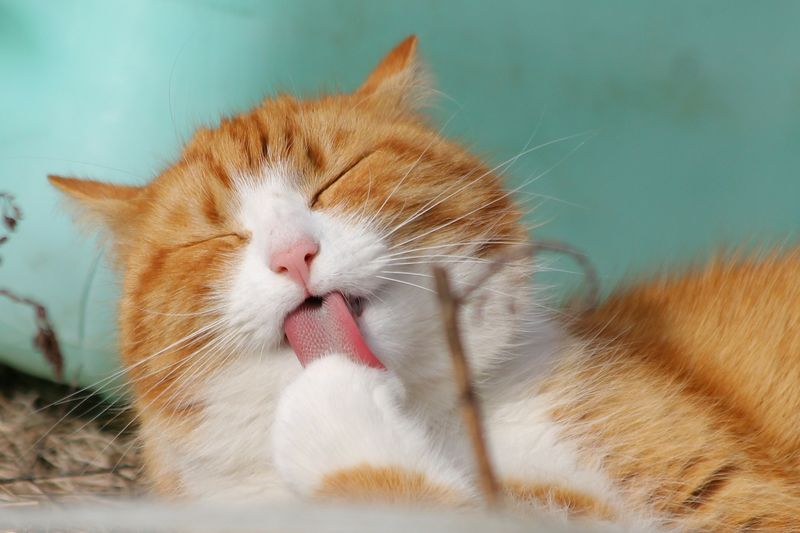
Cats are known for their grooming habits, but when grooming becomes obsessive, it may indicate stress or unhappiness. Excessive grooming can lead to bald spots or skin irritation, showing a clear signal that something is amiss.
This behavior might be triggered by changes in the environment, such as a new pet or moving to a new home. Alternatively, it could result from allergies or parasites, causing discomfort that prompts excessive licking.
To address this, identify any recent changes in your cat’s environment or diet. Consulting with a veterinarian can help determine if allergies or skin conditions are present. Providing interactive toys and dedicating time for play can also divert your cat’s attention from over-grooming.
4. Hiding More Often
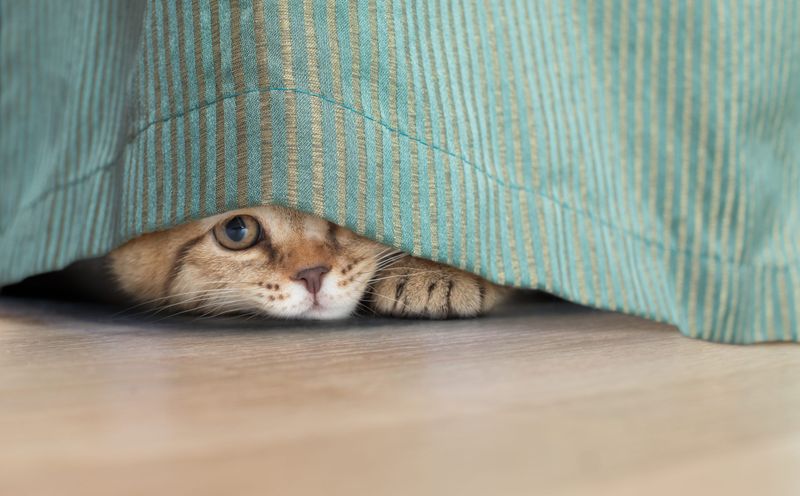
Cats naturally enjoy their solitude, but if your feline friend is spending more time hiding than usual, it could be a sign of unhappiness or anxiety. Hiding is a coping mechanism for cats when they feel threatened or stressed.
Assess whether there have been recent changes in your household that might contribute to this behavior. Noise, new people, or even a new piece of furniture can unsettle them.
Cats may also hide due to health issues, so it’s crucial to observe if hiding is accompanied by other symptoms like weight loss or lethargy.
Encouraging your cat to socialize by using treats or toys can help them feel more secure. Providing a safe, quiet space where they can retreat without completely isolating themselves can also be beneficial.
5. Aggressive Behavior
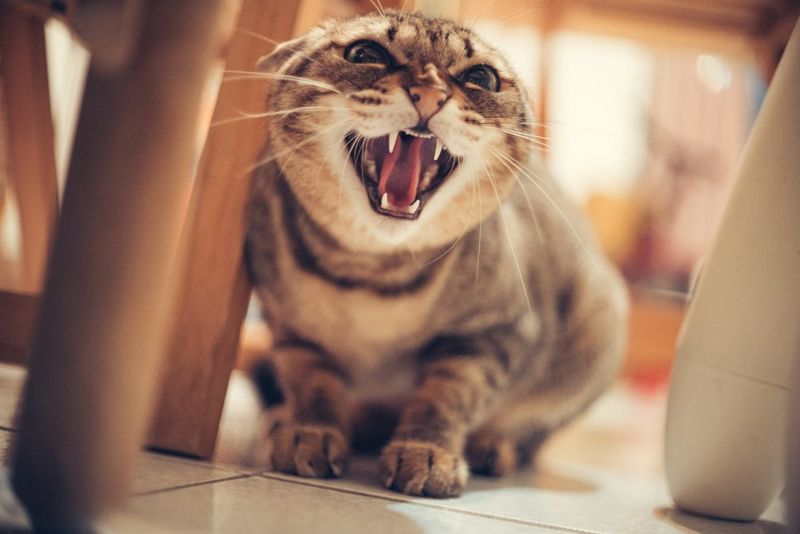
Aggression is often a clear sign that a cat is unhappy or feels threatened. This behavior can manifest as hissing, biting, or scratching, and is not typical of a relaxed cat. Various factors can trigger aggression, such as fear, territorial disputes, or pain.
Understanding the root cause of aggression is key to addressing it. If your cat shows aggression towards another pet, it may be due to competition for resources or territory. Pain or discomfort caused by an injury or a medical condition can also provoke this response.
Consulting with a veterinarian to rule out health issues is advisable if aggression arises suddenly. Implementing behavioral strategies, such as providing enough resources and space for each pet, can help mitigate territorial aggression. Engaging in gentle play and ensuring a peaceful environment can assist in calming an aggressive cat.
6. Decreased Playfulness
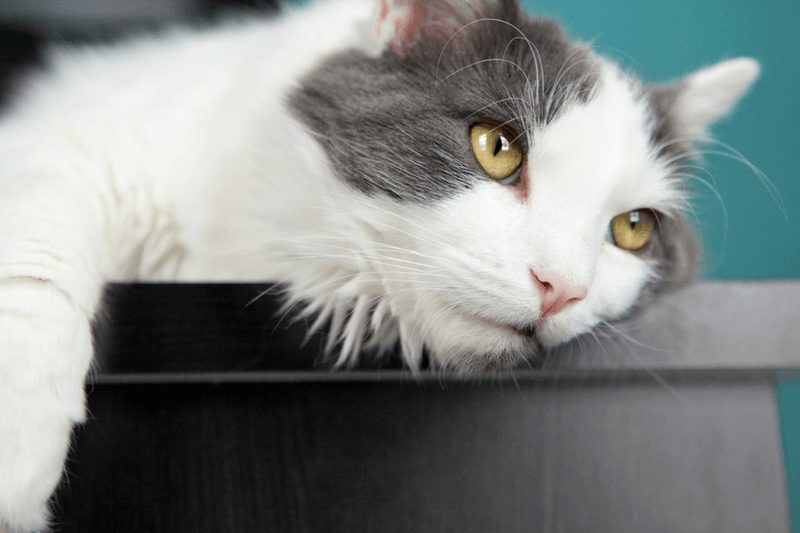
A cat that suddenly loses interest in play might be experiencing unhappiness or health issues. Play is an essential part of a cat’s life, contributing to their physical and mental well-being. When a cat becomes less playful, it could signal boredom, depression, or physical discomfort.
Consider any changes in your cat’s routine or environment that might contribute to this shift in behavior. New pets, changes in household dynamics, or even weather changes can influence a cat’s mood. To rekindle their interest in play, introduce new toys or games that stimulate their hunting instincts.
Regular interactive play sessions can also help maintain their physical health and reduce stress. If decreased playfulness persists, a veterinary check-up is warranted to rule out underlying health problems.
7. Avoidance Of Litter Box
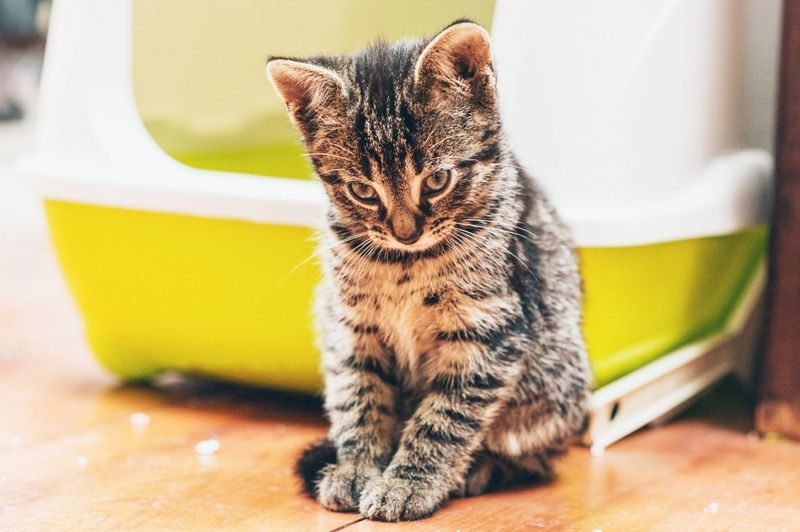
Avoiding the litter box is a common issue that can indicate a cat’s unhappiness or health problems. This behavior is often a cry for help, signaling discomfort or distress. There could be several reasons for this change in behavior.
Stress or anxiety, often stemming from changes in their environment, can lead to litter box avoidance. Additionally, medical issues like urinary tract infections or kidney problems could be at play. To address this issue, ensure the litter box is clean and located in a quiet, accessible area.
Observe your cat for any signs of discomfort or changes in urination habits. Consulting a veterinarian is crucial if you suspect a health problem. Providing multiple litter box options can also help, especially in multi-cat households.
8. Loss Of Interest In Surroundings
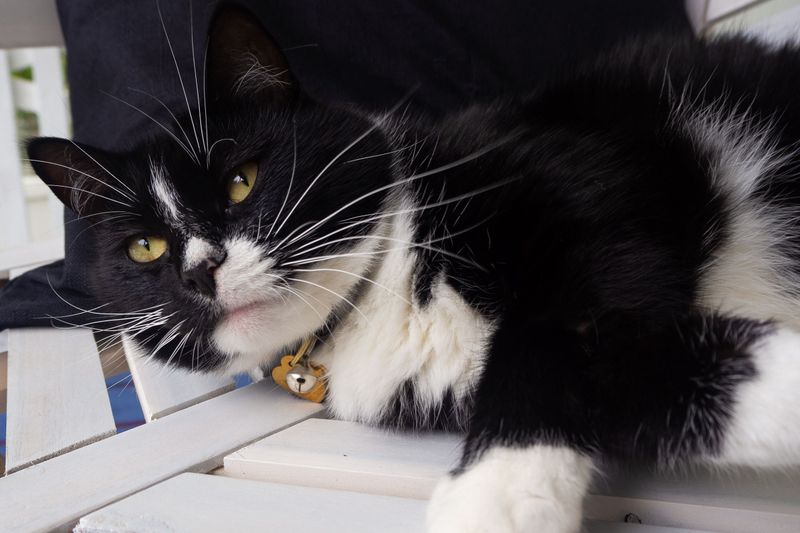
When a cat seems indifferent to its surroundings, it might be experiencing unhappiness or boredom. Cats are naturally curious creatures, so a lack of interest in what’s happening around them can signal distress.
Consider any recent changes in your cat’s environment that might contribute to this behavior, such as new furniture or a change in routine.
Additionally, a lack of stimulation or interaction can lead to such disinterest. Introducing new activities and toys can help rekindle your cat’s curiosity. Interactive toys, scratching posts, and climbing structures can provide mental and physical stimulation.
Spending quality time with your cat through play and affection can also encourage them to engage with their environment. If indifference persists, consulting with a veterinarian is wise to rule out health issues.
9. Changes In Sleep Patterns
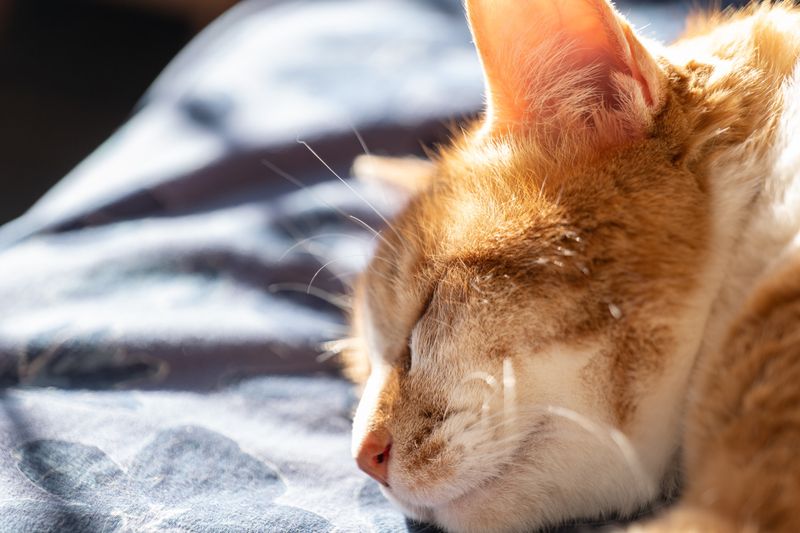
Changes in sleep patterns can be a subtle sign of unhappiness in cats. While cats typically sleep for a large portion of the day, any significant deviation from their usual sleep routine might indicate stress or discomfort.
Various factors, such as noise, changes in the household, or health issues, can disrupt a cat’s sleep. If your cat is sleeping too much or is restless at night, it might be experiencing anxiety or physical discomfort. Ensuring a peaceful sleeping environment, free from noise and disturbance, can help.
Providing a comfortable bed and maintaining a consistent daily routine can also aid in regulating their sleep. If changes in sleep patterns persist, a veterinary consultation is recommended to rule out underlying medical conditions.
10. Overeating Or Undereating
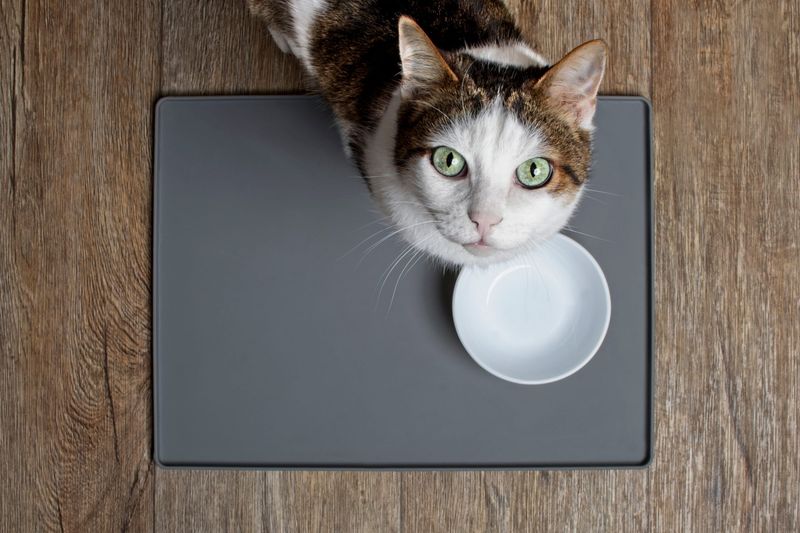
Fluctuations in eating habits, whether overeating or undereating, can be signs of a cat’s emotional unrest. Both behaviors can indicate stress, boredom, or health issues. Overeating might be a way for your cat to cope with stress or boredom.
Conversely, undereating can be a response to anxiety, depression, or illness. Monitoring your cat’s eating habits closely is essential to identify any sudden changes.
To address these issues, ensure a balanced diet and establish regular feeding times. Introducing interactive feeding toys can make mealtime more engaging, helping to manage overeating.
If undereating is a concern, offering a variety of foods might stimulate your cat’s appetite. Consultation with a veterinarian is advised to rule out any medical concerns.
11. Destructive Behavior
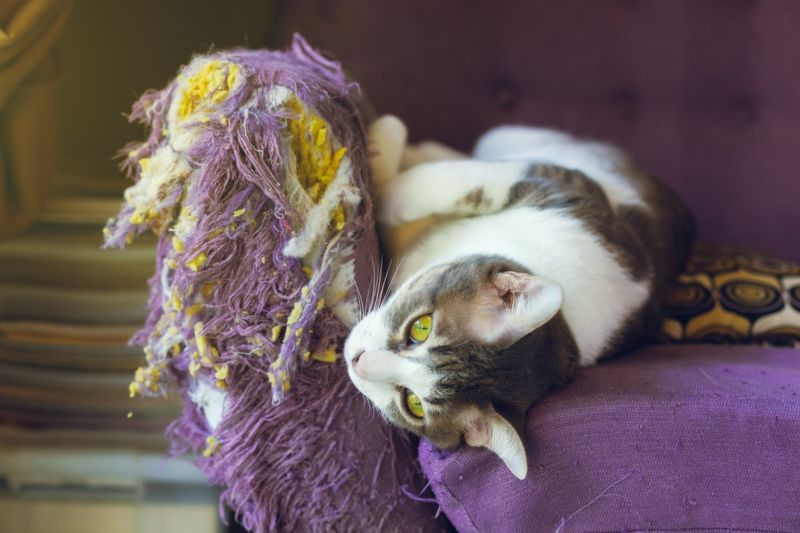
Destructive behavior in cats, such as scratching furniture or knocking items over, can signal unhappiness or stress. This behavior is often a way for cats to express frustration or anxiety. Consider any changes in your household that may have led to this behavior.
New pets, unfamiliar visitors, or rearranged furniture can all contribute to a cat feeling unsettled. Providing appropriate outlets for this behavior, like scratching posts and interactive toys, can help channel their energy positively.
Ensuring your cat receives enough attention and playtime can also reduce the likelihood of destructive actions. If the behavior persists, consulting with a vet or a feline behaviorist might provide further insights into addressing the issue.
12. Frequent Scratching
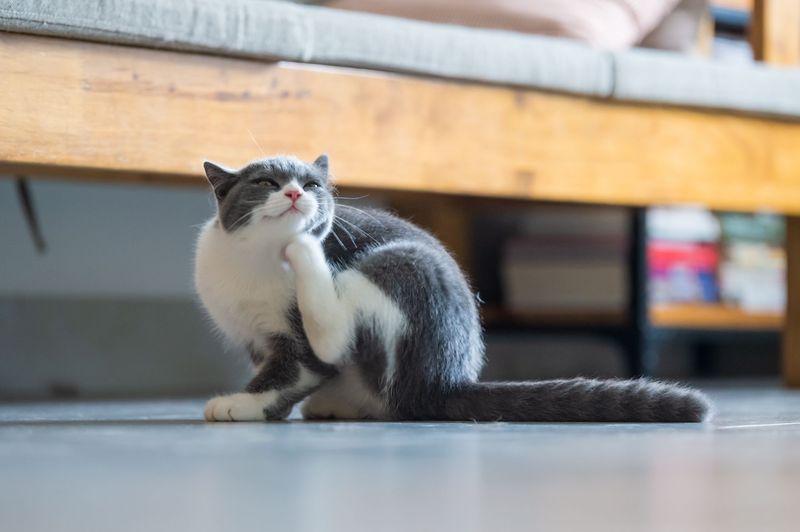
Frequent scratching might not only be a sign of allergies or pests but also an indicator of stress or unhappiness in cats. Excessive scratching can lead to skin irritation or even infection, which could exacerbate the problem.
If your cat is scratching more than usual, check for fleas, mites, or any skin issues. Additionally, stressors in their environment, such as noise or changes in the household, can contribute to this behavior. Addressing the underlying cause of frequent scratching is crucial.
Ensure your cat is on a regular flea prevention program, and consult a veterinarian if skin issues persist. Reducing stress through a calm environment and providing enrichment through toys and play can also help alleviate this behavior.
13. Change In Vocalization
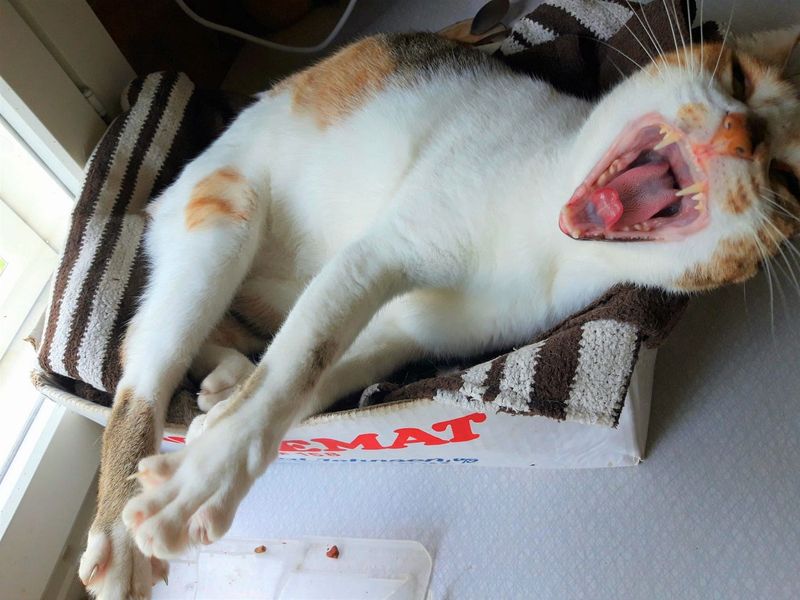
A sudden change in a cat’s vocalization, whether increased or decreased, can indicate distress or unhappiness. Cats communicate through meowing, and any deviation from their normal vocal patterns can be telling.
Increased vocalization might be a response to stress, discomfort, or a need for attention. Conversely, a usually vocal cat that becomes quiet might be feeling unwell or depressed. Observing your cat’s overall behavior can provide clues to the cause of the change.
If accompanied by other signs of stress or illness, seek veterinary advice to rule out health issues. Providing a stable and comforting environment, along with regular interaction, can help stabilize their vocal habits.
14. Weight Changes
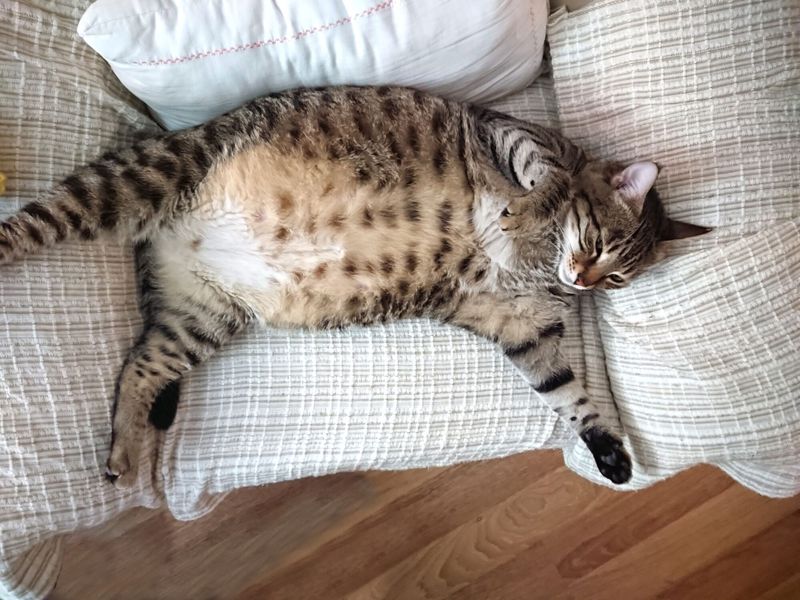
Sudden weight changes in cats, whether loss or gain, are significant indicators of their well-being. Such changes can point to underlying health issues or emotional distress. Weight loss might be due to undereating, stress, or illness, while weight gain could result from overeating or lack of activity.
These changes require careful monitoring to understand their root cause. If you observe noticeable weight fluctuations, consider consulting a veterinarian for a thorough health check.
Providing a balanced diet and regular exercise can help manage your cat’s weight effectively. Additionally, ensuring a stress-free environment can alleviate emotional factors contributing to weight changes.
15. Lethargy And Fatigue
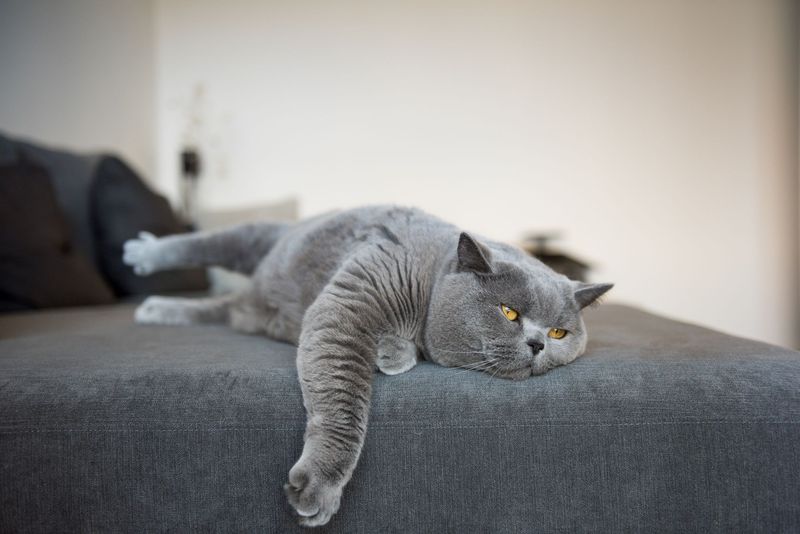
Lethargy and fatigue in cats can be symptoms of unhappiness or health problems. While cats do enjoy lounging, abnormal lethargy suggests they might be feeling unwell or stressed. Consider any changes in your cat’s environment that might contribute to their low energy levels.
Stressful situations, such as moving or the introduction of new pets, can impact their activity. Encouraging gentle play and providing stimulating toys can help boost their energy levels. However, if lethargy persists, it’s crucial to consult a veterinarian to rule out any serious health issues.
16. Increased Aggression Towards Humans
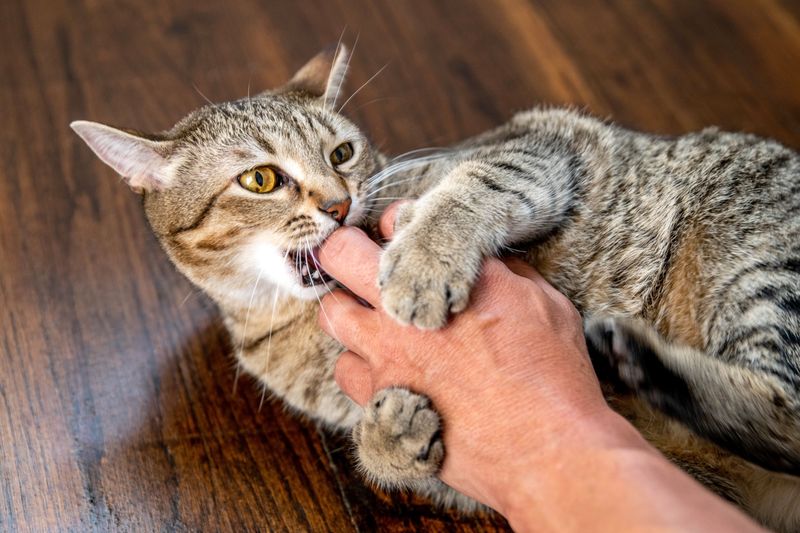
When a cat shows increased aggression towards humans, it’s a strong indicator of distress or unhappiness. This behavior can manifest as biting, scratching, or swatting. Understanding the triggers can help address the issue.
Changes in the household, inadequate resources, or even previous negative experiences with humans might contribute to this behavior.
Providing a calm and consistent environment, along with positive reinforcement, can help rebuild trust. If aggression continues, consulting a feline behaviorist or veterinarian can provide further guidance on managing the behavior effectively.
17. Refusal To Use Scratching Posts
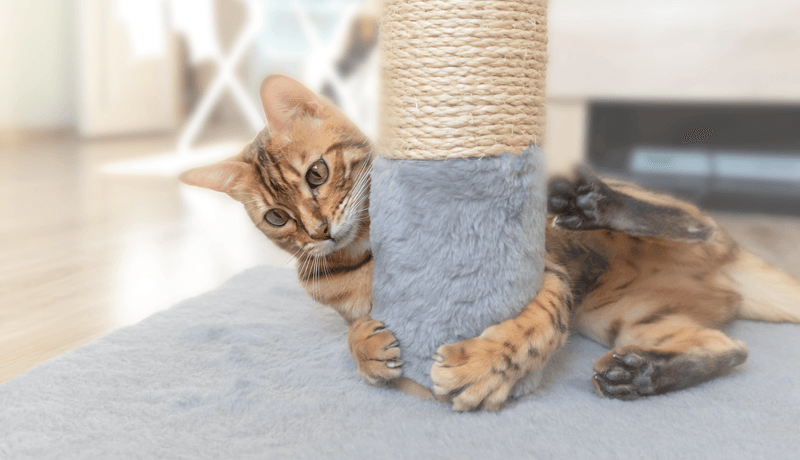
When a cat refuses to use its scratching post, opting instead for furniture, it might signify unhappiness or discontent. This behavior can result from stress, lack of interest, or simply an unsuitable scratching post. Ensure the scratching post is appealing and located in an area where your cat spends time.
Different textures and heights might attract your cat to use it more frequently. Encouraging your cat with treats or catnip can make the scratching post more enticing. If the behavior persists, evaluate any environmental changes or stressors that might be affecting your cat’s usual habits.
18. Change In Grooming Habits
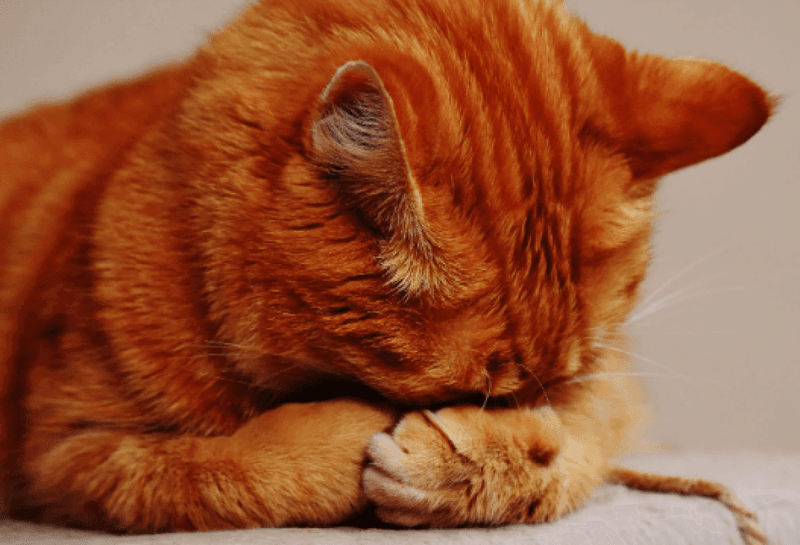
A change in grooming habits, whether excessive or reduced grooming, can signal a cat’s unhappiness. Grooming is a natural behavior, and deviations can indicate stress or health issues. Increased grooming might be due to anxiety, causing your cat to over-groom as a coping mechanism.
Reduced grooming can suggest depression or physical discomfort, such as arthritis. Observe your cat’s overall behavior to understand the cause of these changes.
Regular veterinary check-ups can help identify any underlying medical conditions. Providing a stress-free environment and engaging your cat in play can help regulate their grooming habits.

